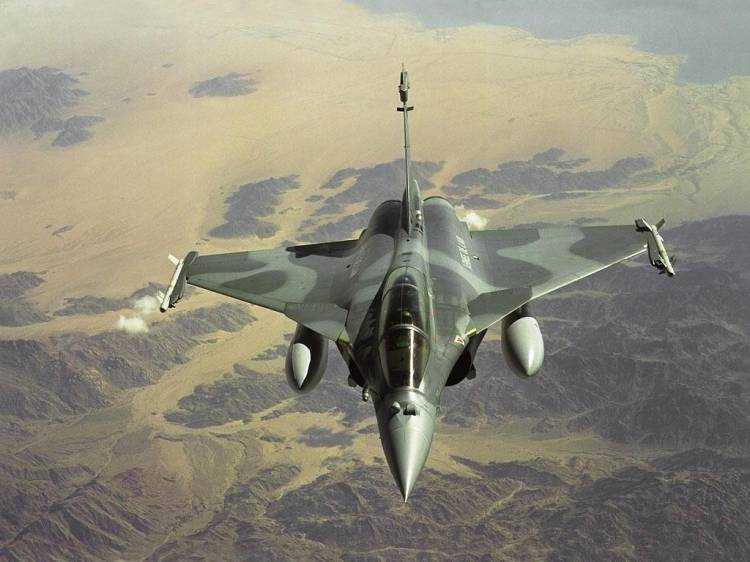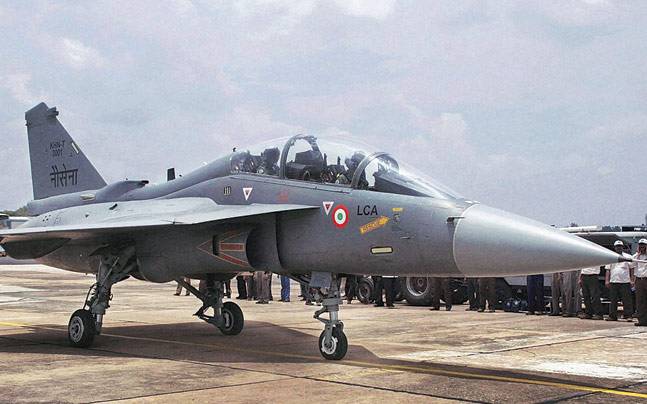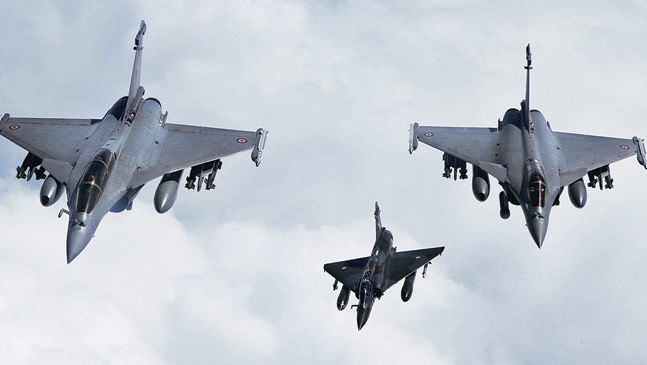INDIA
DEFENCE CONSULTANTS
|
WHAT'S
HOT? –– ANALYSIS OF RECENT HAPPENINGS |
|
IAF fighter AIRCRAFT induction (Source: TOI) (With Air Force Day to be celebrated on 8th Oct 2015 the media is agog with air force news! - Editor) |
|
New Delhi, 04 October 2015 NEW DELHI: With China "exponentially" ramping up its air combat operations in the Tibet Autonomous Region (TAR), even as Pakistan expands and upgrades its F-16 fleet, India is going in for a major rejig of its fighter induction and serviceability plans to be ready for any individual or collusive threat in the years ahead. IAF chief Air Chief Marshal Arup Raha on Saturday said several plans were under way for induction and deployment of "potent assets" as well as infrastructure development along the borders, even though he admitted China was developing "tremendous" military capabilities at a very rapid clip. As for Pakistan, on being asked if IAF could take out the terror camps across the border if required, ACM Raha said his force had the requisite "capability" but the "intent" or "decision" to undertake such surgical strikes "is a political one". "We are not looking at one-front or two-front war. We just want capabilities to deter a war and project power in our area of strategic interest. We are looking at building our fighter combat squadrons to 42 by 2027," said ACM Raha.
Rafale Towards this, the IAF chief said he expected the contract for the direct acquisition of 36 French Rafale fighters - which was decided during the Modi-Hollande summit in April -- to be inked before the end of this year.
But IAF is down to just 35 fighter squadrons, which includes a mix of obsolete jets like MiG-21s and MiG-27s being progressively retired as well as new fighters like Sukhoi-30MKIs grappling with poor serviceability rates. Just two new squadrons of Rafales, expected to cost around $5 billion, will not make up the desperately-required numbers. "As IAF chief, I would certainly want more...at least six MMRCA (medium multi-role combat aircraft) squadrons, whether they are Rafales or some other alternative. But they have to be viable in terms of costs, transfer of technology and the Make in India policy. The government will decide in due course," said ACM Raha. Concurrently, the stress now in on "improving" the indigenous Tejas Mark-I fighter and then jumping straight onto the development of the indigenous fifth-generation fighter aircraft (FGFA) or AMCA (advanced medium combat aircraft) by junking the development of a Tejas Mark-II. As was first reported by TOI, with the preliminary design work for the twin-engine AMCA over, the aim is to fly its first prototype by 2023-2024. It will combine advanced stealth, super-cruise (capability to achieve supersonic cruise speeds without use of afterburners), super-maneuverability, data fusion and multi-sensor integration on a single fighter. The thrust on AMCA, of course, also puts a big question mark on the future of the proposed joint project with Russia to co-develop and co-produce a FGFA modelled on its Sukhoi T-50 or PAK-FA. Apart from long-term strategic and economic reasons behind the push for the indigenous AMCA, India is not happy with the technical, cost and delivery timeframes bedeviling the Russian FGFA. The PAK-FA, for instance, can still not super-cruise, which is critical for the capability to "look first and shoot first". "But the "issues" in the Indo-Russian FGFA project are being "addressed at the highest levels" now. India is keeping all options open ahead of PM Narendra Modi's visit to Moscow in December, which range from an off-the-shelf purchase of 60-65 fighters to undertaking the joint production envisaged earlier. IAF pins hope on home-made LCA Tejas From India Today IAF chief Arup Raha sounded optimistic about the ongoing negotiations with the French government for buying Rafales but admitted that adding up numbers to increase fighter jet strength remains a challenge.
Tejas LCA Hoping to seal the contract for the purchase of 36 French Rafale jets by the end of this year, the Indian Air Force has pinned hopes on struggling home-made solutions - Light Combat Aircraft "Tejas" and yet to be developed indigenous fifth generation fighter - to end the critical shortage of fighter jets. IAF chief Arup Raha on Saturday sounded optimistic about the ongoing negotiations with the French government for buying Rafales but admitted that adding up numbers to increase fighter jet strength remains a challenge. Speaking to reporters ahead of Air Force Day on October 8, Air Chief Marshal Raha said that IAF needs six squadrons (around 120 aircraft) of Rafale-type medium multi-role class of aircraft, clearly spelling out that the 36 fighter jets under negotiations are not enough. He said all the options were available to fill the shortfall but it was still not clear if India will increase the order for Rafales or go for a new aircraft. The air chief, however, claimed that selection of Rafale was so impeccable that the French aircraft maker Dassault was able to sell the aircraft to many other countries riding on IAF's strict evaluation. IAF's original plan to buy 126 Rafales was scrapped earlier this year by the Modi government after the prolonged negotiations had hit a deadlock. A fresh attempt, this time through direct negotiations with the French government, is underway to buy 36 jets.
Negotiations are underway to buy 36 Rafale jets. The IAF needs to add 10 new squadrons by 2027 from the current strength of 32 squadrons. The force also seems to have made a subtle rejig in its plan to strengthen its fighter jet muscle. In a significant move, the IAF has scrapped the plan to develop an upgraded version of LCA "Tejas" and will settle for six squadrons of the existing aircraft with certain improvements - better radar, new electronic warfare suit, refueling capacity and improved missiles - in the existing form. Sources said that existing LCA had 57 deficiencies out of which 45 have been addressed and with four key changes, it can be inducted in large numbers. The training of IAF pilots on LCA has already commenced with a batch of four and the first aircraft is expected to be handed over by March next year. In the earlier plan, a more powerful LCA Mk II was proposed to overcome problems in the initial version. Along with Tejas, development of advanced medium aircraft, an indigenous fifth generation fighter aircraft (FGFA), will be given impetus with the help of foreign consultant. The IAF chief hoped that the country had 15 years to develop indigenous FGFA. The project is crucial considering the fact that India's joint development of FGFA with Russia has entered rough weather and only political intervention can resurrect the programme. |


